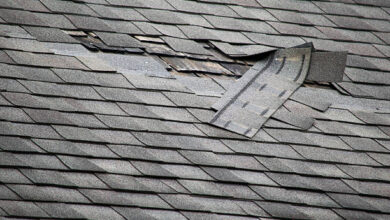Hornbeam Hedge plant and How Many Hornbeam Hedges Per Meter?
Hornbeam Hedges Planting guide
Aspiring to create a visually appealing and functional garden space often leads us to a critical landscaping question: How many hornbeam hedges per meter? This inquiry is more than a mere numerical curiosity—it’s a fundamental aspect of garden design that dictates the aesthetic and practical success of your outdoor sanctuary. Hornbeam, or Carpinus betulus, is renowned for its versatility and beauty, making it a top choice for gardeners and landscape architects alike. This article aims to provide an in-depth exploration into the world of hornbeam hedges, offering clear guidance on optimal spacing to ensure your garden not only flourishes but also resonates with your vision of green splendor.
Understanding Hornbeam Hedges
Characteristics of Hornbeam Hedges
The hornbeam is a marvel of nature, combining beauty and resilience. With its smooth gray bark and oval, serrated leaves, it’s not just a hedge plant; it’s a statement. In spring, the fresh green leaves are a sight to behold, turning to a golden hue in autumn. It’s a hardy species, tolerating cold and different soil types, making it a versatile choice for many gardens.
Why Choose Hornbeam for Your Hedge?
Hornbeam hedges are not just about aesthetics; they’re practical too! They’re drought-resistant once established, and can cope with a bit of shade. Plus, they’re less prone to pests and diseases, unlike many other hedge plants. They offer privacy, noise reduction, and even wind protection. In comparison with beech hedges, hornbeam is superior in retaining its leaves in winter, especially in heavier soils, ensuring year-round privacy.
Planting Hornbeam Hedges: A Comprehensive Guide
Preparation for Planting
Good preparation is key to a thriving hornbeam hedge. Test your soil’s drainage and improve it if needed, as waterlogged roots are a no-go. Incorporate organic matter into the soil to give your hornbeams a nutritious start. The best times for planting are when the soil is moist but not frozen – typically late autumn or early spring.
Spacing Requirements
The golden rule of hedge planting is getting the spacing right. Hornbeam hedges are no exception. While general guidelines are helpful, consider the specific needs of your space and the function of your hedge. Are you looking for a tight, formal hedge or a more natural, airy screen?
How Many Hornbeam Hedges Per Meter?
When planning a garden, the question of “How many hornbeam hedges per meter?” is pivotal to achieving the desired balance between aesthetics and practicality. Hornbeam hedges, known for their robustness and elegant appearance, are a popular choice among gardeners and landscapers. But the key to unlocking their full potential lies in understanding the optimal number of plants per meter.
The spacing of hornbeam hedges is influenced by several factors, including the intended purpose of the hedge, the growth rate of the hornbeam, and the immediate environment in which they are planted. Typically, hornbeam hedges are planted with the objective of creating a dense, lush barrier that offers privacy and wind protection, or for ornamental purposes to enhance the garden’s visual appeal.
For a dense and private hedge, more hornbeam plants per meter are required. This ensures that the hedge grows thick and compact, leaving little to no space for gaps. In contrast, if the aim is to cultivate a hedge that is more open and decorative, fewer plants per meter are needed. This spacing allows each hornbeam plant enough room to flourish individually, displaying its full canopy and structure.
It is also important to consider the mature size of the hornbeam. Hornbeam can grow quite tall and wide if left unpruned, so the spacing needs to accommodate their full potential size. Regular pruning and maintenance can keep the hedge at the desired size, but adequate space from the start is crucial for the health and aesthetics of the hedge.
Let’s break this down into a practical guide:
Table: Hornbeam Hedges Spacing Guide
| Number of Plants | Spacing (cm) | Purpose | Description |
| 5 | 20 | Dense Privacy Hedge | Ideal for creating a thick, compact hedge for maximum privacy. |
| 4 | 25 | Standard Hedge | A balance between density and growth, suitable for average garden sizes. |
| 3 | 33 | Decorative Hedge | Allows more space for each plant, ideal for decorative purposes in larger gardens. |
Variations Based on Hedge Purpose
When planning your hedge, consider its purpose. If it’s primarily for privacy, leaning towards 5 hornbeam hedges per meter is advisable. For a more ornamental or less dense hedge, 3 to 4 plants per meter should suffice. Remember, the denser the hedge, the more maintenance it might require.
Planting and Caring for Your Hornbeam Hedge
Step-by-Step Planting Process
- Soil Preparation: Loosen the soil to about twice the depth of the root ball. Add compost or aged manure for fertility.
- Planting: Create a trench, spacing the plants as per your calculation. Make sure the root ball is level with the soil surface.
- Watering: Initially, water deeply. Regular watering during the first year helps establish the plants.
Ongoing Care and Maintenance
Regular watering, especially in the first year, is crucial for hornbeam hedges. Prune once or twice a year – in late winter for shaping and summer for maintenance. Feeding with a balanced fertilizer can promote healthy growth. Look out for signs of pests or disease, although hornbeams are relatively trouble-free.
Design Considerations for Hornbeam Hedges
Integrating Hornbeam Hedges into Landscape Design
Hornbeam hedges are versatile in landscape design. Whether you’re aiming for a formal, manicured look or a more natural boundary, these hedges can be tailored to fit. They can frame a garden, create pathways, or act as a backdrop for flowering plants.
Combining Hornbeam with Other Plants
Pairing hornbeam hedges with other plants can create a dynamic and layered garden design. Consider underplanting with spring bulbs like daffodils for a pop of early color, or alongside flowering shrubs like hydrangeas for textural contrast.
Conclusion
The journey to answering “How many hornbeam hedges per meter?” concludes here, but the path to a magnificent garden is just beginning. With the insights and guidelines provided, you are now equipped to transform your space into a living tapestry of hornbeam hedges. Whether your goal is to establish a dense screen for privacy, a decorative border, or a windbreak, the hornbeam hedge stands ready to fulfill your gardening aspirations. Embrace the process, from careful planning and planting to ongoing care, and watch as your garden evolves into a testament to both nature’s beauty and your gardening prowess.
Frequently Asked Questions
1. What impact does the spacing of hornbeam hedges have on local wildlife and biodiversity?
How does the density of hornbeam hedges, influenced by the number of plants per meter, affect the habitat and ecosystem for local birds, insects, and other wildlife?
2. Can the spacing of hornbeam hedges affect my property’s overall value?
Does planting hornbeam hedges at a particular density (e.g., 5 per meter for denser hedges) have any impact on the aesthetic appeal and thus the market value of residential properties?
3. How does the choice of hornbeam hedge spacing align with eco-friendly gardening practices?
In terms of water usage, carbon footprint, and supporting local ecology, how does the decision on the number of hornbeam hedges per meter play into sustainable gardening?
4. Are there specific considerations for hornbeam hedge spacing in urban vs. rural settings?
Does the ideal number of hornbeam hedges per meter differ between urban gardens, where space might be limited, and rural or larger landscapes?
5. How might future climate changes affect the recommended spacing of hornbeam hedges?
Considering changing weather patterns and temperatures, is there a foresight into how the standard recommendation of hornbeam hedges per meter might need to adapt in the future?


